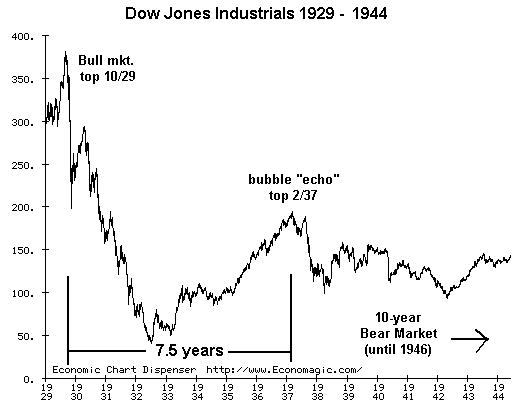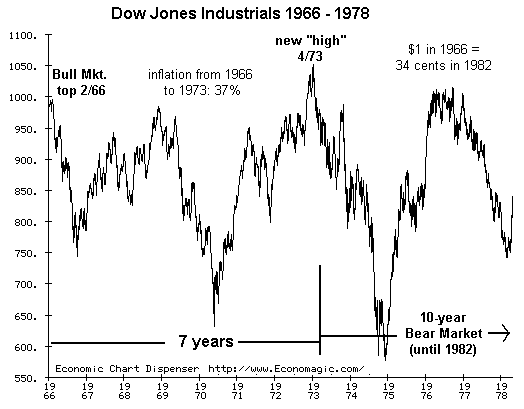

|
| weblog/wEssays archives | home | |
|
Stock Market Needs Suckers, John Q. Public Wary (June 1, 2007) The essential feature of any stock manipulation is distribution: selling the pumped-up over-valued stock to willing (gullible and greedy) speculators. This mechanism is beautifully described in Reminiscences of a Stock Operator At the top of any market, insiders are distributing/selling to suckers. As I documented in The Moon's a Balloon--And About to Pop (May 18, 2007), we have abundant evidence that insiders are unloading their over-valued shares at a furious, even desperate pace. There's just one problem for the Wall Street crowd: there's no final batch of suckers willing to take the shares off their hands! At the top of the 2000 Nasdaq tech-stock bubble, John and Suzie Q. Public were ready buyers, as the millions of IRA and 401K accounts still sporting huge losses in tech stocks attest. But John and Suzie Q. have wised up, and are simply refusing to buy into the current rally. They seem to recall being suckers seven years ago, and aren't interested in playing patsy again. Frequent contributor U. Doran sent in two stories which document American's refusal to jump on Wall Street's bogus band wagon this time around. Here is one Mr. Doran calls "a perfect call for a top": S&P's run: A record for a new era (USA Today) Americans are putting 9 out of every 10 of their investment dollars into international funds rather than the U.S. stock market--a rational bet, it would seem, against the faltering dollar. So Wall Street is confounded--we need a batch of suckers, and the public is refusing to play. Yikes! The Con Before the Storm The insiders are now so desperate for suckers that their media toadies are rolling out story after story that are basically pleading with the public to "buy" a super-bullish scenario. The classic example is the recent Wall Street Journal front page piece which trumpets the views of a Nobel Prize-winning economist that "this time it's different," and that the global growth and easy-wealth-generation machine isn't about to explode, it's about to enter an era of permanent happy-happy times--But only if you cave in and buy my over-valued shares today! Why Market Optimists Say This Bull Has Legs: Vernon Smith, a Nobel laureate economist, is so bullish on stocks that he's put money in small drug companies -- investments he "wouldn't have touched in the late 1990s," he says. Louise Yamada, a longtime Wall Street market analyst, sees the Dow Jones Industrial Average climbing to 16000 as part of a bull market that she compares with the post-World War II boom. Fritz Meyer, who develops investment strategy for AIM Investments, a $149 billion money-management group in Houston, sees stock gains stretching as far as the eye can see.It must be very frustrating for the insiders. Here they generate a massive rally, and nobody believes it's sustainable. Dang, how could they tell? The insiders and their media toadies are literally pulling out all the stops to keep the market rising upward and the "story" compelling: So who is buying the rally? The insiders. Here's why and how. Say you're an insider and want to sell a vast horde of your free stock-option shares. You are your pals push the stock high enough to generate interest, then you place bullish stories in the mainstream media. The public buys the con and you unload your shares. But the public is refusing the con. So you move to Plan B. What's Plan B? Buy your personal shares with corporate "buy-back" money. Yes, buy it from yourself, but with other people's money. Corporate buy-backs have hit an unprecedented high over the past three years: corporations have bought back hundreds of billions of dollars of their own stocks. Was this really the best "investment" of shareholder cash? Were there no investment opportunities in the whole wide world that were better than your own shares? Not if you needed a buyer for your own shares. How about giving the shareholders a huge cash dividend? No way--we make the big money by unloading our free shares. And if we have to use corporate cash to do so--hey, why not? The insiders are still hoping to con the public into playing sucker, and the recent rise of the S&P 500 beyond its March 2000 high seven long years ago is the perfect opportunity to trumpet the amazing profit potential of buying shares at the top. But consider this chart of the stock market in previous Bull Markets, and note what happens seven years after the collapse of the bubble: 

For more on this subject and a wide array of other topics, please visit my weblog. copyright © 2007 Charles Hugh Smith. All rights reserved in all media. I would be honored if you linked this wEssay to your site, or printed a copy for your own use. |
||
| weblog/wEssays | home |